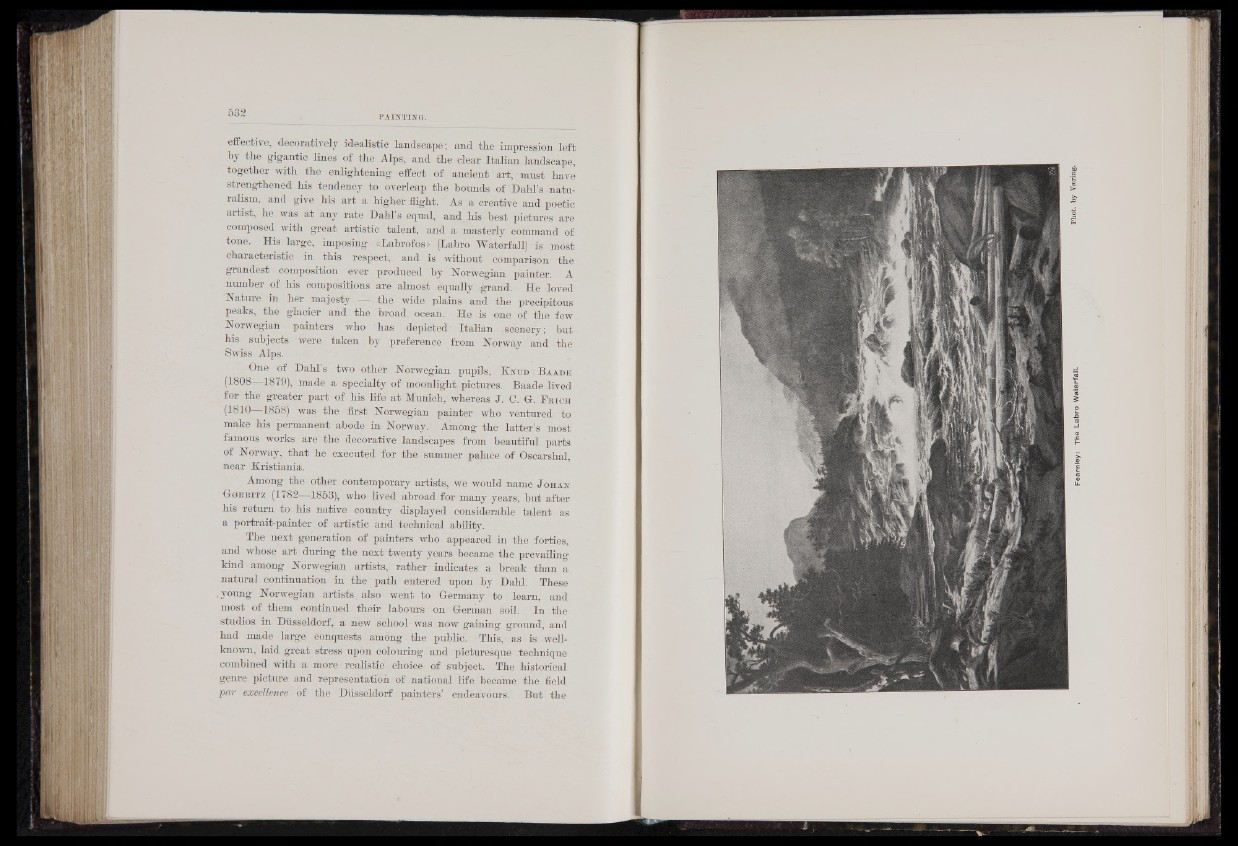
effective, decoratively idealistic landscape; and the impresjion left
by the gigantic lines of the Alps, and the clear Italian landscape,
together with the enlightening effect of ancient art, must have
strengthened his tendency to overleap the bounds of Dahl’s -naturalism,
and give his art a higher flight. As a creative and poetic
artist, he was at any rate Dahl’s equal, and his best pictures are
composed with great artistic talent, and a masterly command of
tone. His large, imposing «Labrofos» (Labro Waterfall) is most
characteristic in this respect,, and is without comparison the
grandest composition ever produced by Norwegian painter. A
number of his compositions are almost equally grand. He loved
Nature in her majesty —- the wide plains and the precipitous
peaks, the glacier and the broad ocean. He is one of the few .
Norwegian painters who has depicted Italian -scenery; but
his subjects were taken by preference from Norway and the
Swiss Alps.
One of Dahl’s two other Norwegian pupils, K nud B a a d e
(1808—1879), made a specialty of moonlight pictures. Baade lived
for the greater part of his life at Munich, whereas J. 0. G. Heigh
(1810 1858) was the first Norwegian painter who ventured to
make his permanent abode in Norway. Among the latter’s most
famous works are the decorative landscapes from beautiful parts
of Norway, that he executed for the summer palace of Oscarshal,
near Kristiania.
Among the other contemporary artists, we would name J ohan
G o e b it z (1782—1853), who lived abroad for many years, but after
his return to his native country displayed considerable talent as
a portrait-painter of artistic and technical ability.
The next generation of painters who appeared in the forties,
and whose art during the next twenty years became the prevailing
kind among Norwegian artists,- father indicates a break than a
natural continuation in the path entered upon by Dahl. These
.young Norwegian artists also went to Germany to learn, and
most of them continued their labours on German soil. In the
studios in Düsseldorf, a new school- was now gaining ground, and
had made large conquests among the public. This, as is well-
known, laid great stress upon colouring and picturesque technique
combined with a more realistic, choice of subject. The historical
genre picture and representation of national life became the field
par excellence of the Düsseldorf painters’ endeavours. But the
Fearnley: The